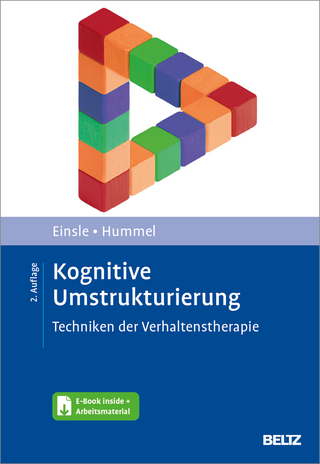
Arenas of Comfort in Adolescence
A Study of Adjustment in Context
Seiten
2013
Psychology Press Ltd (Verlag)
978-0-415-64592-8 (ISBN)
Psychology Press Ltd (Verlag)
978-0-415-64592-8 (ISBN)
This book examines the multifaceted contexts of adolescent development with a focus on the "arenas of comfort" in which young people find strength and support wih which to handle the more stressful aspects of their lives.
Adolescence is a time when the social world expands, a time of increasing engagement beyond the family sphere to the school, the peer group, and the workplace. These contexts may present experiences that differ greatly in their tone and content, either contributing to or hindering satisfaction and a positive sense of self. This book examines how the constellation of stressors and rewards in various life domains influences adolescent adjustment.
The theoretical framework is Simmons' "arena of comfort": a context for individuals to relax and to rejuvenate, so that potentially stressful changes and experiences in another arena can be endured or mastered. The concept of the arena of comfort highlights the adolescent's active role in the developmental process, as young people seek out and alternate between contexts that provide challenge and those that provide solace. By providing social support, a comfort arena strengthens the young person so that challenges in other life spheres can be dealt with.
This book uses data from 1,000 adolescents to address key questions derived from the "arena of comfort" thesis: In which arenas of their lives do adolescents typically find comfort? Does the experience of comfort differ by gender, socioeconomic level, and other dimensions of social background? Do sources of comfort change as the adolescent moves through high school? Do adolescents typically find comfort in just one or two or in several arenas? Where are they most likely to experience this positive, comfortable state? Are adolescents who find comfort in a greater number of arenas better off, in terms of their mental health and achievement, than those who are comfortable in fewer contexts? Are some arenas more consequential for adolescent adjustment than others? Can an arena of comfort in one setting, in fact, buffer the effects of stressful experiences in another context?
The results of this research indicate that making adolescents' contexts more supportive and comfortable will be reflected in improved mental health and achievement. This book will be of interest to all practitioners and researchers concerned with the mental health of adolescents.
Adolescence is a time when the social world expands, a time of increasing engagement beyond the family sphere to the school, the peer group, and the workplace. These contexts may present experiences that differ greatly in their tone and content, either contributing to or hindering satisfaction and a positive sense of self. This book examines how the constellation of stressors and rewards in various life domains influences adolescent adjustment.
The theoretical framework is Simmons' "arena of comfort": a context for individuals to relax and to rejuvenate, so that potentially stressful changes and experiences in another arena can be endured or mastered. The concept of the arena of comfort highlights the adolescent's active role in the developmental process, as young people seek out and alternate between contexts that provide challenge and those that provide solace. By providing social support, a comfort arena strengthens the young person so that challenges in other life spheres can be dealt with.
This book uses data from 1,000 adolescents to address key questions derived from the "arena of comfort" thesis: In which arenas of their lives do adolescents typically find comfort? Does the experience of comfort differ by gender, socioeconomic level, and other dimensions of social background? Do sources of comfort change as the adolescent moves through high school? Do adolescents typically find comfort in just one or two or in several arenas? Where are they most likely to experience this positive, comfortable state? Are adolescents who find comfort in a greater number of arenas better off, in terms of their mental health and achievement, than those who are comfortable in fewer contexts? Are some arenas more consequential for adolescent adjustment than others? Can an arena of comfort in one setting, in fact, buffer the effects of stressful experiences in another context?
The results of this research indicate that making adolescents' contexts more supportive and comfortable will be reflected in improved mental health and achievement. This book will be of interest to all practitioners and researchers concerned with the mental health of adolescents.
Jeylan T. Mortimer, Kathleen T. Call
Contents: Preface. Arenas of Comfort and Adolescent Stress. The Youth Development Study. The Social Location of Comfort in Adolescence. Arenas of Comfort and Adolescent Adjustment. Arenas of Comfort as Stress Moderators. Arenas of Comfort in Adolescence. References. Appendices: Measures. Dichotomous Specification of Comfort Measures and Tenth-Grade Frequencies.
| Erscheint lt. Verlag | 3.6.2013 |
|---|---|
| Reihe/Serie | Research Monographs in Adolescence Series |
| Verlagsort | Hove |
| Sprache | englisch |
| Maße | 152 x 229 mm |
| Gewicht | 317 g |
| Themenwelt | Geisteswissenschaften ► Psychologie ► Allgemeine Psychologie |
| Geisteswissenschaften ► Psychologie ► Entwicklungspsychologie | |
| Geisteswissenschaften ► Psychologie ► Familien- / Systemische Therapie | |
| Geisteswissenschaften ► Psychologie ► Psychoanalyse / Tiefenpsychologie | |
| Geisteswissenschaften ► Psychologie ► Sozialpsychologie | |
| ISBN-10 | 0-415-64592-1 / 0415645921 |
| ISBN-13 | 978-0-415-64592-8 / 9780415645928 |
| Zustand | Neuware |
| Haben Sie eine Frage zum Produkt? |
Mehr entdecken
aus dem Bereich
aus dem Bereich
Techniken der Verhaltenstherapie
Buch (2024)
Julius Beltz GmbH & Co. KG (Verlag)
35,00 €


